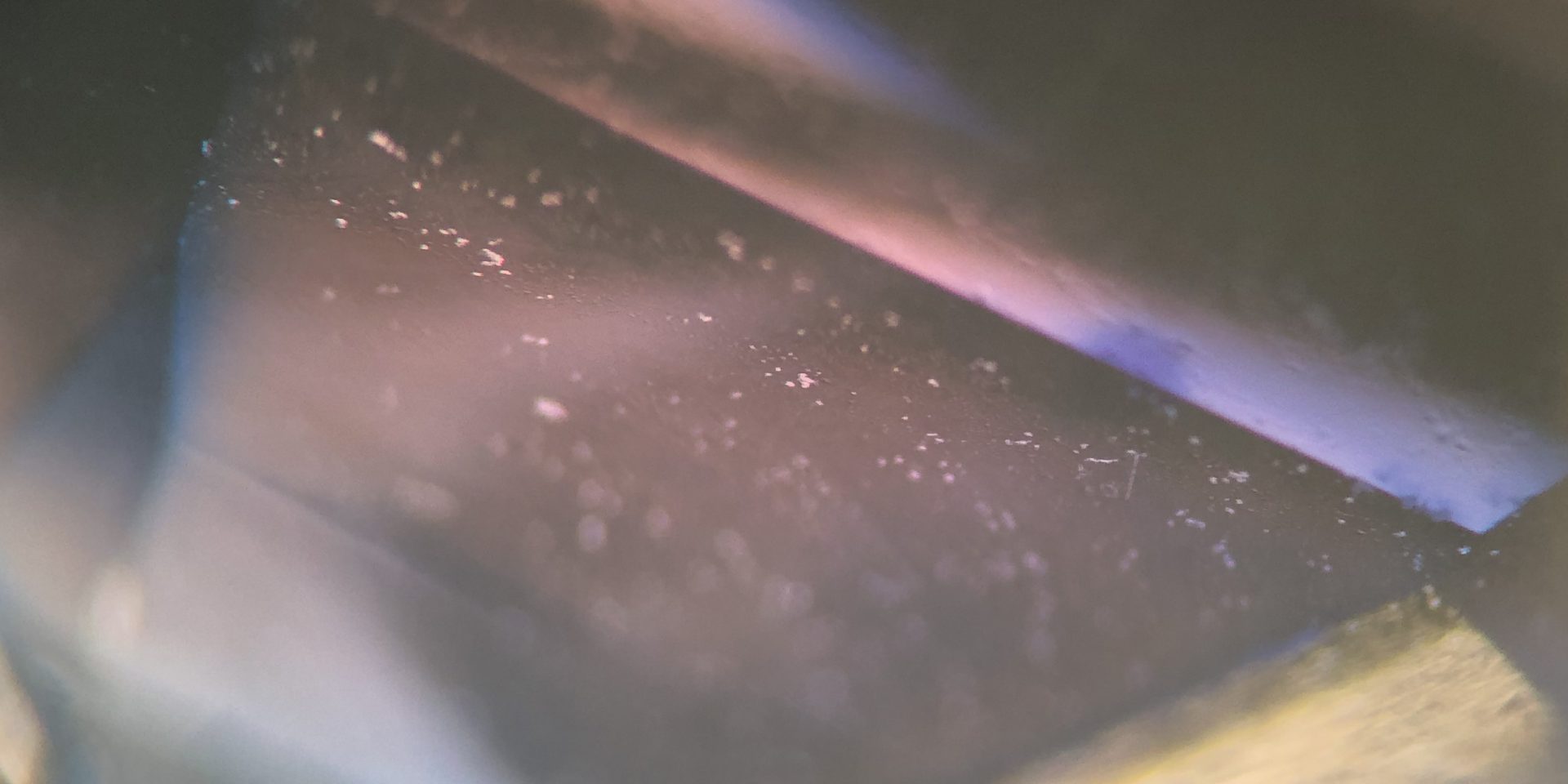GRS Alert: New spinel treatment discovered involving heat and cobalt-diffusion
Introduction
Cobalt-spinels are considered one of the most precious spinel and are rarely colored blue with or without grey to black tones. Blue "cobalt spinel" are at least 10-100x more expensive per carat than grayish-blue colored spinel. Cobalt intensifies the blue color in spinel, considerably enhancing its beauty. Cobalt-spinel over 5 ct can be US$ 10,000 to 30,000 per carat depending on beauty, while grayish-blue over-dark stones are only US$ 250 to 500 per carat depending on size (see Fig. 307b).
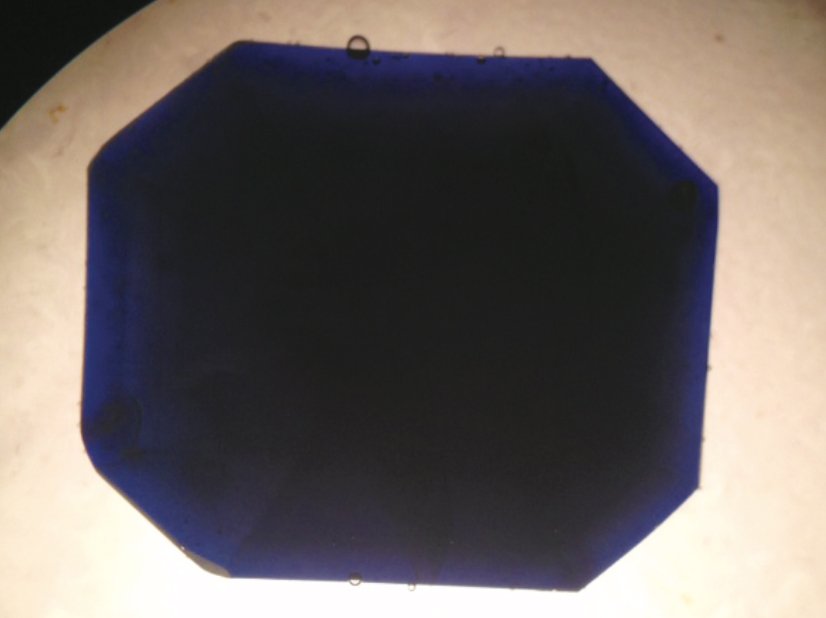
Therefore, the incentives for color-enhancement by cobalt diffusion treatment of spinel are high and it should appear sooner or later in the market. Although we have not seen much of this new treatment yet, its appearance in the market is now a reality. Fig. 307a The new type of blue spinel appeared in Sri Lanka in a local market in Beruwala and was brought to our attention by local gemologist MTM Haris.
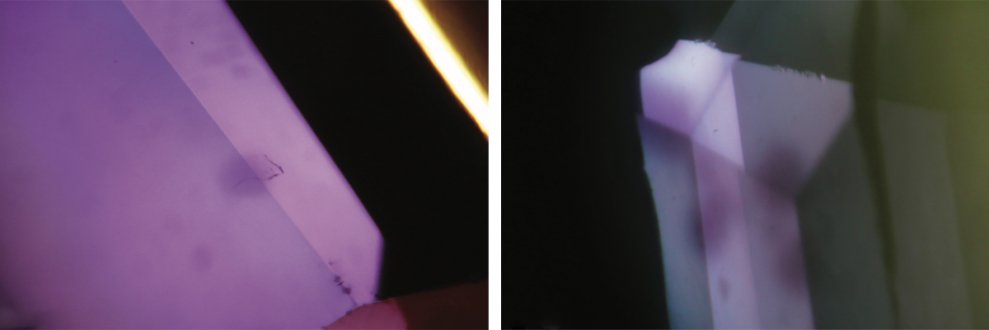
He had seen an unusual spinel of dark blue colour, RI near 1.720 with diffused line and not sharp for a faceted spinel. The spectroscope shows a cobalt spectrum, but cobalt line somewhere near 650 nm rather than 630 nm for natural cobalt spinel. He initially thought that it might be a new synthetic spinel but iron spectrum, RI and inclusions proved it otherwise as a natural spinel. When immersed, this stone shows purple colour concentration around cracks and edges. Some purple colour patches were also seen. No umbrella effect, such as in surface diffusion treated blue sapphires. A tension crack suggested that heat treatment was involved. However, its color was more similar to a dark natural Cobalt-spinel from the origin of Sri Lanka, unlike Cobalt spinel from Vietnam or synthetic counterparts. Under the immersion microscope, a blue rim was noticed that was seen following the outline of the cut stone (Fig. 307a) and this suggested a diffusion-treatment.
The sample was sent to and analysed by GRS with advanced analytical techniques in order to provide proof of this new diffusion-treatment that was previously unreported in the literature. GRS contacted a cooperating laboratory at the ETH Zurich for LA-ICP-MS analyses. A visual inspection of the sample in the GRS laboratory showed that in addition to the observations described above, irregular blue patches can be found on the surface of the sample that are normally considered indications of diffusion treatment.
For the purpose of studying the sample further, it was cut into 2 pieces (Fig. 309). It allowed us to investigate the sample in a profile across the rim and core. The special testing with ED-XRF confirmed unusually high Cobalt concentrations along with low iron-concentrations in the rim (Fig. 312). LA-ICP-MS analysis confirmed high cobalt and titanium-concentrations in the rim as well as underlying concentrations of Zn, Fe and Li (Fig. 309 and Tab Diff1), suggesting a natural spinel material was subjected to diffusion treatment. The results of photoluminescence spectroscopy showed that the spinel was heat-treated (Fig. 310 and Fig. 311). LA-ICP-MS analysis in a profile across the sample finally proved that the sample was surface-diffused to a depth of 300 microns with cobalt and titanium. The base material used was confirmed as a natural spinel of light grayish-blue color. It can be concluded that a new cobalt diffusion-treatment of spinel exists in the market and that blackish-blue Cobalt spinel, with colors and refractive index similar to natural counterparts, must be carefully investigated for the possibility of diffusion treatment using special analysis such as PL and LA-ICP-MS in combination with microscopic analyses.
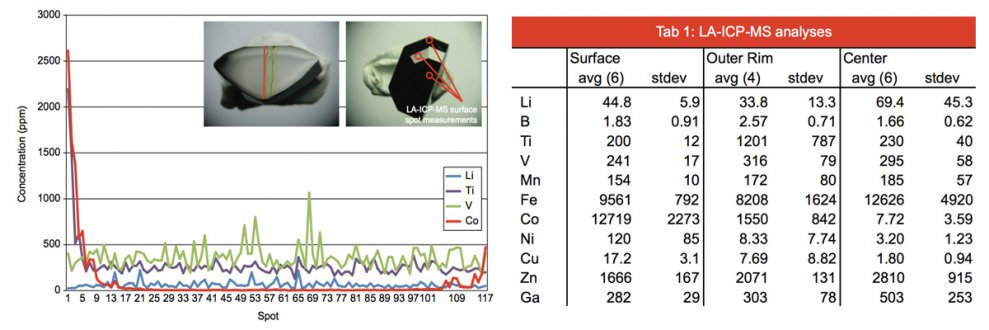
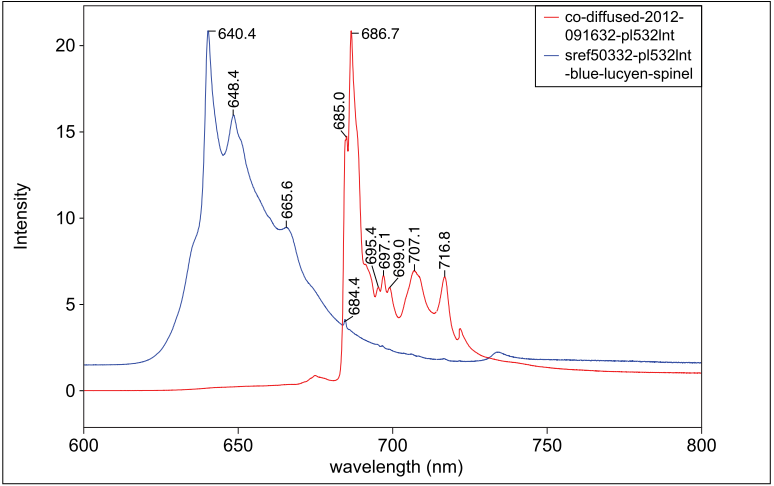
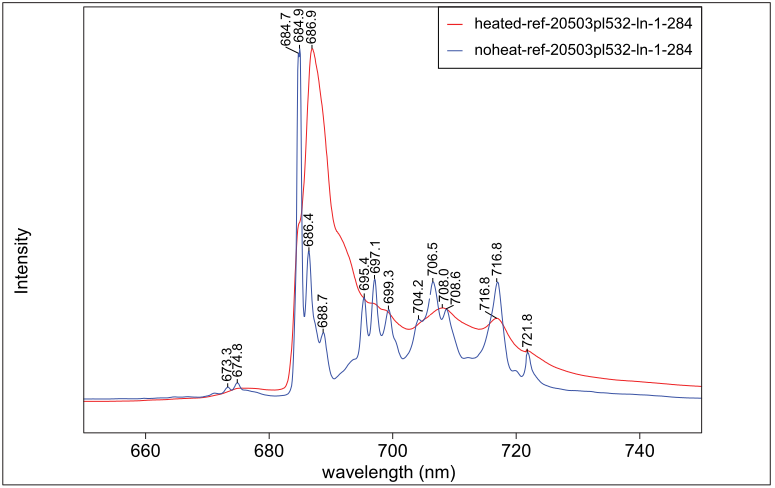
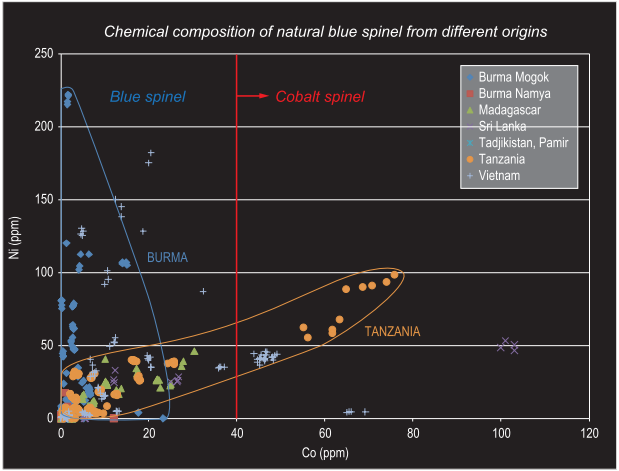
Authors
Dr. Adolf Peretti 1, Prof. Detlef Günther 2 and MTM Haris 3
1 GRS Gemresearch Swisslab Ltd, Sempacherstr.1, CH-6003 Lucerne, Switzerland
2 Laboratory of Inorganic Chemistry, ETH Zurich, HCI, G113, CH-8093 Zurich, Switzerland
3 EG Lab, Emteem Gem Laboratory, Chinafort, Beruwala, Sri Lanka
© 2023, GRS GemResearch Swisslab AG

